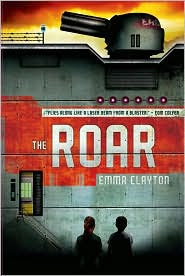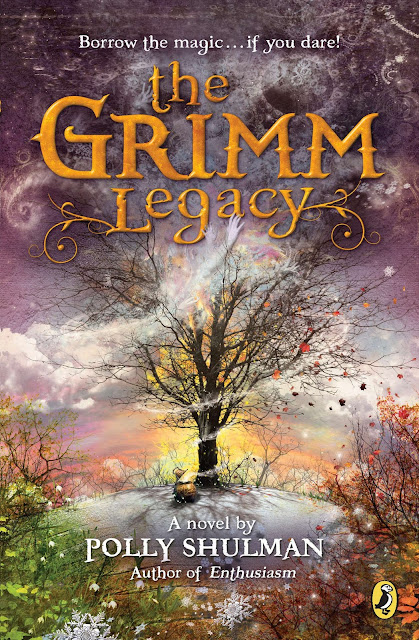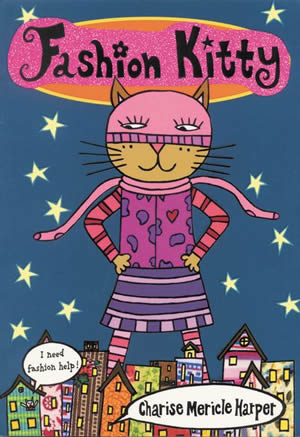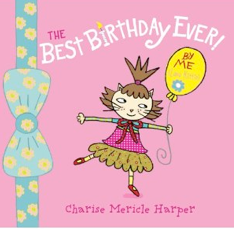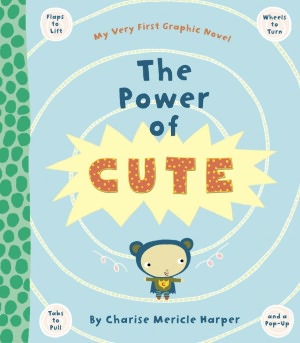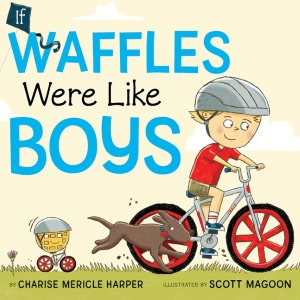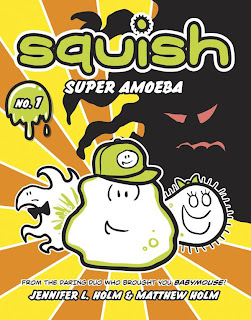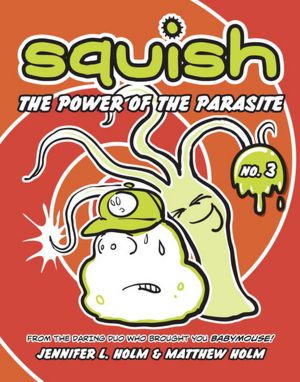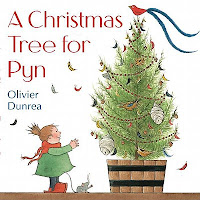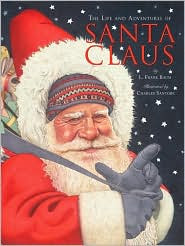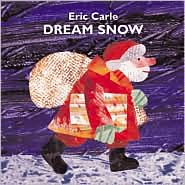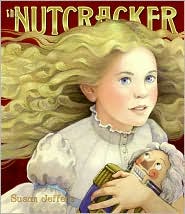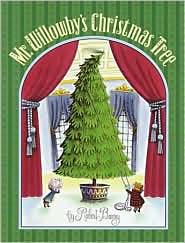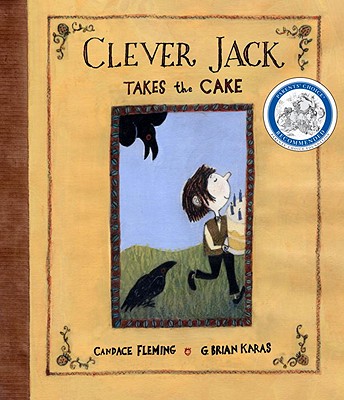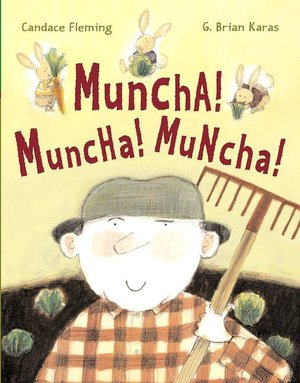
With The Wizard of Dark Street, Shawn Thomas Odyssey sets himself a mighty task. Not only is this book, which is set in 1877, a fantasy novel with witches, fairies and arcane laws and practices, but is it also a mystery with a determined girl sleuth at its center. Every fantasy has a mystery threaded somewhere through the plot, but none that I know of (which certainly doesn't mean there aren't any) have a main character who is determined to be a detective. The setting of the magical world of Dark Street, a thoroughfare that exists between the Iron Gates that lead to New York City and the Glass Gates that lead to the realm of Faerie, is ripe for both magic and intrigue. This street, and the book, are packed to the gills with magical details, historical incidents of importance and a huge cast of characters. Main character Oona Crate is, like Dark Street itself, stuck between two worlds. Oona is next in line to become the Wizard of Dark Street, who has the task of handling the unruly magical objects that turn up from time to time and protect the World of Man from what lies behind the Glass Gates, should they ever open again. But she yearns instead for logic and facts and scientific studies, especially when it comes to unravelling a mystery.
The duality of Oona's existence is made clear early in the novel. Her Uncle Alexander is the current Wizard of Dark Street and ready to take on an apprentice, preferably Oona, who is about to turn thirteen. Her father was the Inspector of Dark Street who was killed by the resident evil, Red Martin. Martin is a man who just may have been alive for five hundred years, which is also when the Glass Gates closed forever and the magic and lore of the Faeries was lost to the people of Dark Street, except, of course, those who might be Natural Magicians - humans with a drop of faerie blood in them. Oona has declared her love for facts and science, despite the fact that she has been schooled (by Deacon, her enchanted, talking raven who has the entire Encyclopedia Arcana, The Complete oxford English Dictionary and The Dark Street Who's Who: 36 B.C. to Present committed to memory) to take over for her Uncle for the last two years because of a tragic accident that occurred years earlier. Excited by the magic she is learning, Oona performed a spell to show her mother and infant sister her talents which sadly resulted in their being crushed beneath a flaming fig tree. Following this, Oona vows never to use magic again but instead take up where her father left off. Although she has helped to catch a jewel thief, she is not taken seriously by Inspector White, a man who makes Inspector Clouseau look like Hercule Poirot. But, her Uncle is a kind and generous man and allows her to forfeit her right to become his apprentice and sets out to find a new one. However, on the very night when he is about to choose an apprentice, he is stabbed with a magical dagger and vanishes into thin air.
Odyssey does a wonderful job with his magical Victorian setting and never misses an opportunity to describe the magical history or capabilities of any person, place or thing on Dark Street and beyond. Pendulum House, the rightful domicile of the presiding Wizard, is especially interesting with an actual seven-foot pendulum swinging through the middle of the grand parlor in the mansion, keeping Dark Street connected to both worlds. Witch Hill, with its hidden entrance, is inhabited by a secretive coven of women who only send child witches into Dark Street to do their bidding. Samuligan, the Wizard's butler/servant/right-hand-man is the only fay living on Dark Street and is over five hundred years old, having been captured during the great war between wizards and faeries by one of the twin daggers (Fay Mors Mortis and Fay Expungo) that also captured (or killed?) the Wizard. Loyal, yet imposing, Samuligan chooses to wear the garb of a cowboy from a Spaghetti Western. Then there is Adler Iree, twin brother of the obnoxious snob Isadora. Adler is in training to be a magical lawyer and, with every magical law that he masters a new set of tattoos appears on his face. A young student, his markings are few when compared to Mr Ravensmith, legal counsel to the Wizard. There is also the completely blind, iris-deprived buffoon of an actor, Hector Grimsbee who, despite his advanced age and all other apparent lack of reason or desire to do so, has applied for the position of apprentice to the Wizard along with Isadora and Adler, Sanora, a timid young witch, and Lamont John-Michael Arlington Fitch III, a young boy from New York who unknowingly answered an ad the Wizard placed in the New York Times in search of an apprentice.
With such an overwhelming cast of characters and a rich geography to describe, Deacon and Samuligan are given over to explanatory speeches almost every other page in The Wizard of Dark Street in order to move along the mystery aspects of the plot. This is too bad. I felt that I could have happily read a story that unfolded at a slower pace and was centered solely around Oona and her divided interests and emotions with the delightful aspects of her world being shown rather than told. A character who is naturally talented in something that is part of her heritage but also curious to try her hand at her father's profession, whether this is due to a tragic accident involving her gifts or not, is fascinating. The fact that she finds a way to resolve these two seemingly opposite desires through the disappearance of her Uncle and potential loss of Pendulum House to the wicked Red Martin is interesting and well deployed over the course of the book, but sometimes at the expense of following what might have been a more interesting path. To make the mystery work, Odyssey places many red herrings, especially in his characters - why was Lamont even part of the story? Perhaps Odyssey is setting him up for a role in the next book - while also obviously calling attention to seemingly random objects and occurrences that become important later in the story as Oona ploddingly puts the puzzle pieces of the mystery together. It is ridiculously hard to write a solid mystery for kids because, no matter how inept the adults in it are. It just never seems quite plausible that a child could actually solve a crime, stop a murderer or a thief and save the day. But, that is the adult in me talking. I loved Scooby-Doo when I was a kid and now, when I watch it with my own children, I can barely sit through a twenty-two minute episode, it is so stilted and obvious. I do not mean to compare Odyssey's book to a cartoon, however. As I said above, The Wizard of Dark Street is rich with character and setting and the idea of a "novel of magic and detection," as Odyssey himself describes it, is a brilliant one. Perhaps that is why it is hard not to point out the things I wish were different here. If I flat out didn't like the book, you wouldn't be seeing a review of it here. I did like this book - the adult reader in me just wanted to like it more. I have no doubt that young readers of fantasy will gobble it up, however. Odyssey sets a magnificent stage in The Wizard of Dark Street. Now, if he can get his actors and sets to move in a more flowing, less expositional way, I know that he will fulfill the promise of his first book with a very rewarding sequel, which I am sure he is already working on!
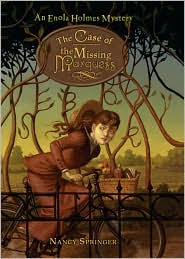 Readers who liked this book might also enjoy Nancy Springer's fantastic series about Sherlock Holmes' much younger sister, Enola Holmes. What these books lack in the way of fantasy, they more than make up for in the world of mystery.
Readers who liked this book might also enjoy Nancy Springer's fantastic series about Sherlock Holmes' much younger sister, Enola Holmes. What these books lack in the way of fantasy, they more than make up for in the world of mystery.

For readers who want more fantasy with their mystery, Michael Buckley's soon-to-be completed series The Sisters Grimm will not disappoint!

For readers who want more fantasy with their mystery, Michael Buckley's soon-to-be completed series The Sisters Grimm will not disappoint!
